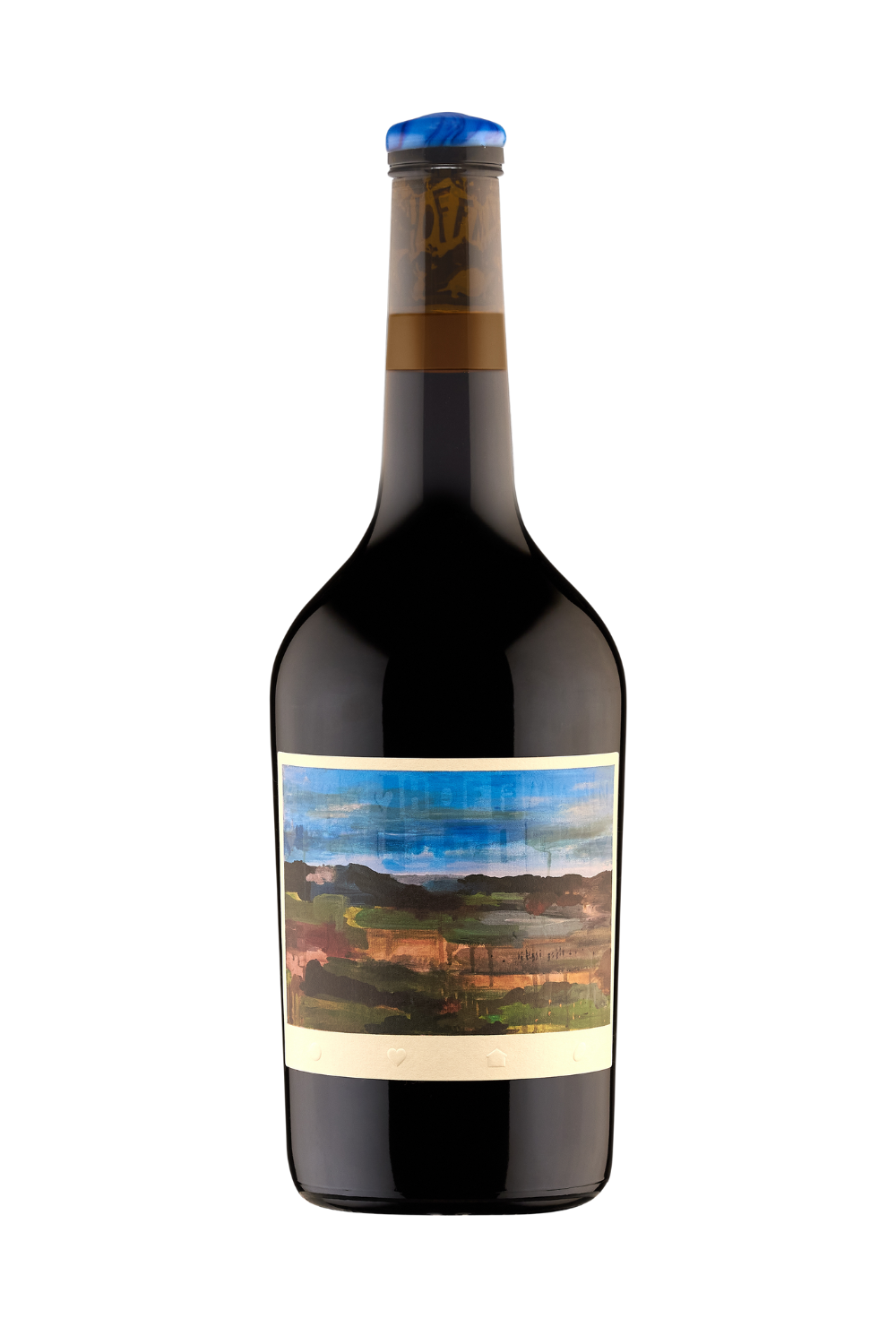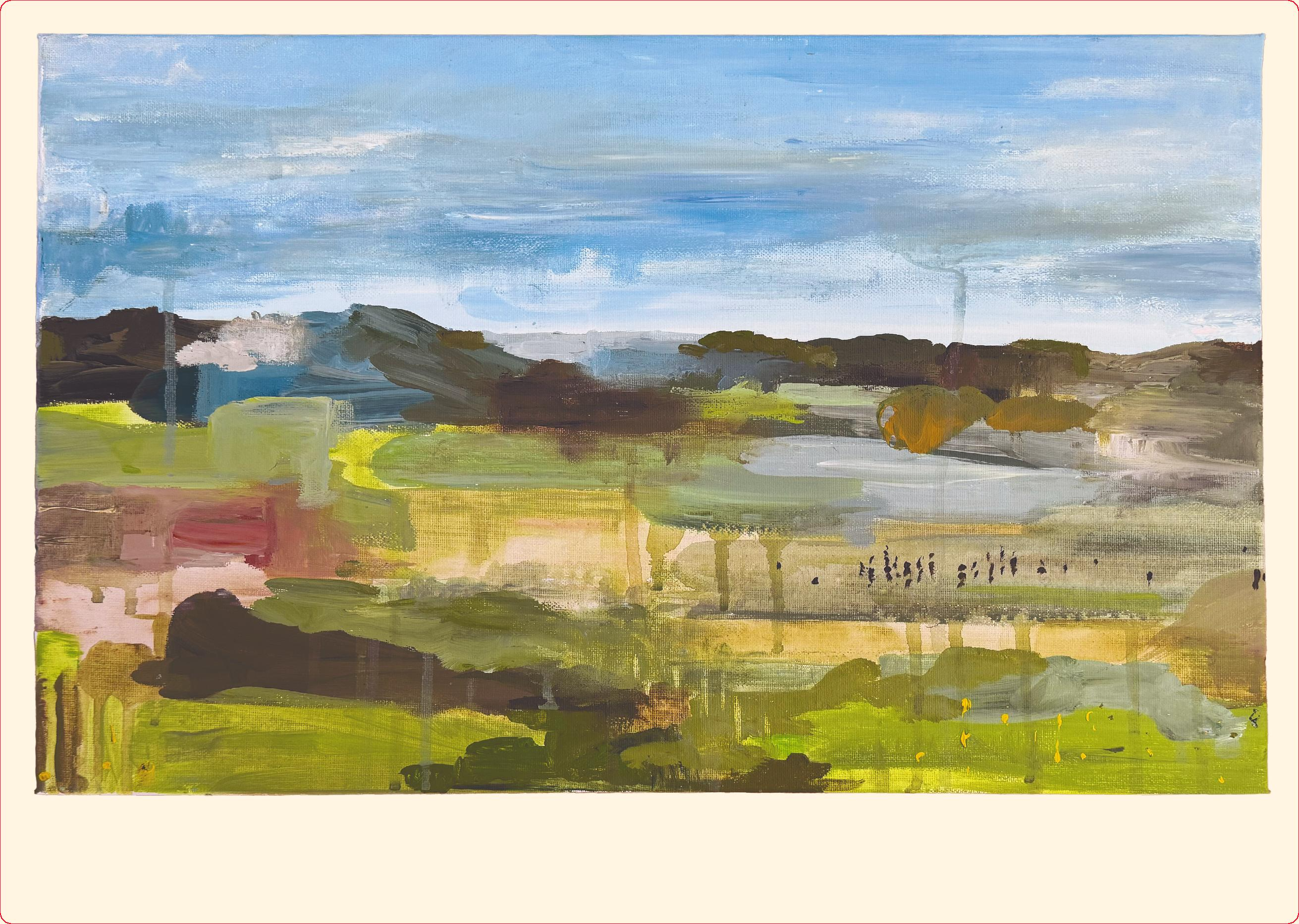
Stats
- Grapes: 100% Syrah
- Vineyard: Hoffmann-Dallwitz Vineyard
- Vine Age: 96-135-years-old
- Soil Type: Ironstone and red clay-loam over deep red clay
- Viticulture: Practicing biodynamic
- Fermentation: Native – stainless-steel (100% whole-cluster)
- Skin Contact: 18-27 days
- Aging: 18-19 months in 228L Burgundy pièces (25% new)
- Alcohol: 14.4%
- pH: 3.95
- Total Acidity: 4 g/L
- Total SO2: 50 ppm
- Total Production: 444 cases

Tasting Note
Vivid garnet in the glass, this wine opens with a swirl of dark fruit and layered spice. Despite its depth, it floats with surprising delicacy. Sourced from vines up to 135 years old, it carries an almost mystical energy. The finish is long, intricate, and unforgettable.
Press & Reviews
James Suckling
98
"Intriguingly perfumed and complex, with lifted aromas of wild blackberries, blood plums, potpourri, graphite, dried herbs and ferric earth. The palate is medium-bodied with finely integrated tannins and tightly wound acidity, giving notes of mocha, cassia bark, lavender and graphite, Truly exceptional, with an almost perfect balance between finesse and power. Drink or hold."
- James Suckling
- James Suckling
Wine Advocate
97
"The 2023 Hoffmann Dallwitz represents the 18th vintage of this wine, and the proportion of older vines versus the younger vines was far outweighed by the former in this year. Here, there were three picks of Hoffmann Dallwitz Old Block fruit, two picks of the 1927 vines in the Hoffmann Dallwitz vineyard and a barrel of the 2022 Hoffmann Dallwitz in the blend as well. This is an altogether darker, more concentrated wine than either the Little Wine #14 or the Our Hill (OH) in this same release. That darkness (without cumbersome weight or overlarge size) sits well within the shape of the wine. That dark fruit note and the tannins that encase it are graphite and gravel, clove and star anise, as well. This is super. It is finer than the 2022 release (which I really loved). 14.4% alcohol, sealed under natural cork and wax."
- Erin Larkin
- Erin Larkin
Select a wine
- 'Hoffmann-Dallwitz' Syrah 2022 - Barossa Valley | Spec Sheet
- 'Hoffmann-Dallwitz' Syrah 2022 - Barossa Valley | Shelf Talker
- 'Hoffmann-Dallwitz' Syrah 2021 - Barossa Valley | Spec Sheet
- 'Hoffmann-Dallwitz' Syrah 2021 - Barossa Valley | Shelf Talker
- 'Hoffmann-Dallwitz' Syrah 2020 - Barossa Valley | Spec Sheet
- 'Hoffmann-Dallwitz' Syrah 2020 - Barossa Valley | Shelf Talker
- 'Hoffmann-Dallwitz' Syrah 2019 - Barossa Valley | Spec Sheet
- 'Hoffman-Dalwitz' Syrah 2016 - Barossa Valley | Spec Sheet
- 'Mahé & Ribo' Syrah 2015 - Barossa Valley | Spec Sheet
- 'XIV' Syrah 2014 - Barossa Valley | Spec Sheet
- 'DW-Old' Syrah 2013 - Barossa Valley | Spec Sheet

